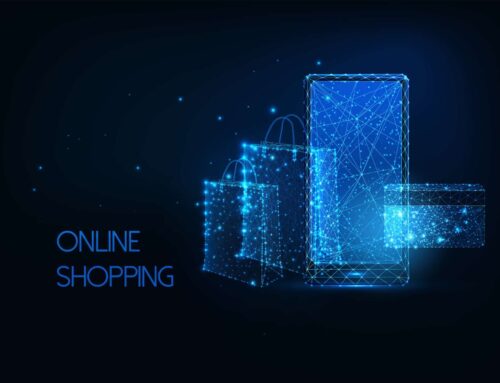Black Friday was first established around two decades ago in the USA and, ever since, it has been the indisputable most important day of the year for each and every retail business owner. A massive opportunity to revive the economy during an arguably non-productive time of the year, Black Friday has been gradually making its way to various countries around the world, ones that even practice entirely different customs and traditions. Black Friday has been crowned as the busiest day for retail both in the United States and across the Atlantic. However, the accelerated global shift to e-commerce has completely altered Black Friday as we know it.

E-commerce’s biggest leverage is its ability to overcome the distance barrier between the seller and the buyer of a product. As e-commerce never ceases to evolve and to offer new capabilities that make its use faster, simpler and more reliable, its annual growth rate, resulting from the ever-extensive use of the internet and the equivalently growing demand for material goods, has been quite impressive. The wide variety of products that can be found online, combined with the abundance of offers and sales, the greater accessibility in contrast with physical stores and the ability to compare prices, are considered to be the main explanation to global e-commerce’s unprecedented growth levels.
E-commerce reached its all time high in 2020, a milestone that is heavily linked to the COVID-19 pandemic and turned the familiarisation with e-commerce into an absolute necessity for every person that wishes to acquire material goods. This signifies a new era for online stores, as online purchases have become an integral part of a growing percentage of consumers’ behaviour. Under new conditions this time, both physical and online stores are required to readjust their tactics, part of which is their Black Friday strategy. Normally, an assiduous planning process needs to be implemented, even months before Black Friday. Here are some insights on how your online store can get ready for the most profitable day of the year and how you can benefit the most from it.
Better start building your campaign early
Your Black Friday campaign’s results are strongly connected to its planning process, one that has got to be thorough and detailed. The earlier you manage to organise your stock, decide among the products to be promoted and choose the relevant sales channels, the greater are the chances of your Black Friday strategy being successful. Do not miss out on observing your audience and adapting your strategy to their needs – even months before Black Friday arrives, you are going to need to know the answers to burning questions like the individual marketing activities that will make your strategy, the nature of your collaboration with authorised resellers and the choice of products that your campaign is going to focus on. Organising your strategy in a timely manner will guarantee a head start on your competitors and save you the precious work hours that can be used differently as Black Friday approaches. Do not hesitate to retarget past consumers and to reapproach the audience that has expressed interest in your products, through remarketing activities.
Prepare your audience for what is coming
Clearly, each brand’s consumers will grow impatient as Black Friday approaches, scheduling to either purchase a number of specified products or to at least browse across a number of websites. Extensive scientific research on the psychology behind consumer behaviour, indicates that buyers tend to make a lot of impulse buys and unplanned purchases throughout Black Friday’s duration, yielding to altering their regular patterns of consumption. Your chance to beat the competition is highly dependent on preparing your audience accordingly. Make sure to showcase your upcoming Black Friday offers and sales by creating a sentiment of enthusiasm and impatience, expressed through an imaginative email marketing or social media campaign that will motivate your audience to proceed with a purchase. Hype them up with a number of reasons why they should make that happen, by highlighting your brand elements that they are going to resonate with, as much as some well-needed customer value. Rewarding your loyal consumer base with an additional offer through your newsletter is encouraged as one of the best practices that will help you win your audience over.
Perform the right tweaks that will optimise your website
Many compare an online store’s interface to some sort of digital showcase. If, subsequently, a well-organised physical store’s showcase will succeed in drawing your audience to your store, then it is evident how your online store should serve the exact same purpose by being carefully arranged in a fashion that inspires trust in your brand. Even when your strategy is thoroughly planned and executed, the lack of a reliable and fully functional website will likely lead to underperforming results. Rethink your strategy by using online tools or ask your hosting services provider for guidance, so as to ensure that your website’s server can handle an unusual traffic surge and to avoid potential crashes. Besides, it is estimated that 50% of users would not revisit a non-responsive website. Another useful tweak that accurately corresponds to modern consumers’ needs is the application of flexible payment options. Consumers may avoid your online store, in the case when the latter does not support their preferred payment method. Try to incorporate as many payment methods as possible, even relatively non-typical, such as Apple Pay, Google Pay and popular cryptocurrencies, like Bitcoin.
Pay attention to your content
Beside the technical part, that concerns a website’s structure and functionality, the importance of its content must not be dismissed, especially when it comes to the positioning and promotion of each time’s products, sales and offers. All of the above must be presented clearly through both your website’s structure and its content. The added consumer value that shall be gained, consequently, should be evident and undeniable, deriving from both the reduced prices of your products and the application of brand management’s best practices in general. The latter will enhance your brand attractiveness and help your audience resonate with it – a process that, under no circumstances, can begin only a few days before Black Friday arrives.
Find the right distribution channels
Every business corresponds to a specified target audience, which leads to the inevitable need to find the perfect platforms through which its accompanying products will be promoted. The aforementioned platforms should accurately depict the target audience’s needs and preferences. Beside your online store’s layout and appearance, you should make sure to pick your partners profoundly, making sure that their brand identity is in accord with your target audience’s common values and characteristics that differentiate them. If, for instance, you are in charge of an brand that focuses on youth clothing, you should make sure that the sales channels through which your products are being promoted are capable of gathering a generally young audience.
In any case, maintaining multiple retail channels will drive optimal results. Simple statistics on consumer behaviour during Black Friday suggest that a most significant portion of consumers will make at least one purchase, hence why your brand’s presence among various sales channels (i.e. resellers’ online stores, marketplaces on social media such as Facebook and Instagram and product search engines like Google Shopping etc) will undoubtedly maximize your conversions’ volume. As it will help you measure your brand awareness and assess the right sales channel per product and audience segment, it will also allow you to gather some valuable information to be used in future marketing activities.
Manage your inventory efficiently
The selection of products that will make your Black Friday campaign needs to be chosen as early as possible, in order for the production and logistics departments to be able to handle the heavy workload effectively. All sales-based modern businesses rely on information systems that allow them to inspect their supply chain at any given time, handle their sales funnel and use KPIs to actively measure each individual product’s appeal to the target audience. This software, combined with the consistent and thorough processing of the relevant website reports and Google Insights, will lead to a most accurate Black Friday sales forecast. An effective e-commerce best practice suggests modest discounts on your most popular products and fast-sellers that do not require further promotion, leading to a great chance to sell your so-called dead stock, composed of your worst performing products, in large discounts.
Benefit from the evaluation of your strategy
As we mentioned earlier in this entry, consumer behaviour during Black Friday will provide you with valuable insights on your customer base, your strategy’s efficiency or lack thereof and your products’ performance. Black Friday is way more than a short-term burst of your sales volume. Even in the case when your results end up being far from the desired level in a generally disappointing campaign, there is great importance of the insights that can be gathered.
Strategy evaluation is a crucial process that should not be dismissed – that is, even when your Black Friday sales volume skyrockets. First of all, you should ensure beforehand that your sales results can be depicted in measurable indicators that reflect the extent of your strategy’s success, the effectiveness of each sales channel and every single product’s performance. The likes of Google Analytics or other equivalent online tools will be extremely useful in this process.
It is evident how gathering information and assessing your strategy will be great help in future campaigns. The better you know your audience and its preferences, the easier it will be to adapt your products and activities to its needs and thus to provide the value needed to turn your seasonal consumers into a regular and loyal customer base.






